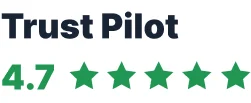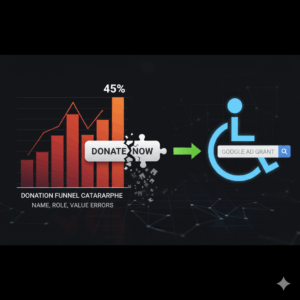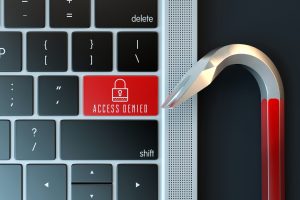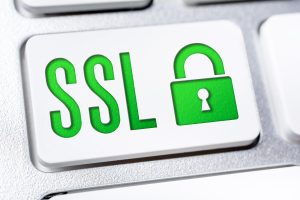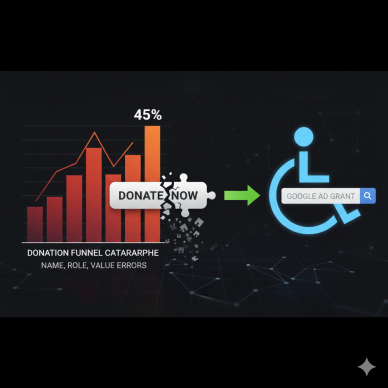Website security holds immense importance in today’s digital landscape. Cybersecurity breaches affect many organisations. A survey found that 23% of organisations experienced breaches in the last year alone. The consequences of data breaches can devastate businesses. Financial losses, reputational damage, and legal repercussions often follow breaches. Implementing robust security measures like Website Malware Removal, Domain Support, and Server Maintenance is crucial. These steps protect sensitive data and maintain trust with customers. Investing in Email Setup and Website Development further enhances security. Prioritising these aspects ensures a safer online presence.
Firewalls Website Security Tips

Firewalls can thus be said to play a very important role in the security of websites. They operate as a barrier between your company’s internal network and potential threats. You have to put firewalls in place as a basic measure to ensure that your website is not vulnerable to data thefts.
Understanding Firewalls
Firewalls come in various types, each offering unique protection levels. Next-Generation Firewalls provide deeper insights into network traffic. These firewalls encourage proactive cybersecurity strategies and help businesses stay compliant with evolving requirements. Managed firewall services offer improved configuration and compliance maintenance. They ensure continuous monitoring and protection against cyber attacks and malware.
Types of Firewalls
- Packet-Filtering Firewalls: These firewalls analyze packets that are exchanged between computers. They either filter or pass them depending on some set of rules.
- Stateful Inspection Firewalls: These firewalls watch the ongoing connections and decide which of the network packets are to be passed through.
- Next-Generation Firewalls: These advanced firewalls can inspect application levels. They incorporate intrusion prevention, and they bring in intelligence from beyond the firewall.
Benefits of Using Firewalls
The use of firewalls has a number of advantages for the security of the Web sites. They control access to your network and safeguard your data from being accessed by unauthorised persons. Firewalls also help prevent the spread of viruses and minimize the chances of someone infiltrating the firm’s network. A managed firewall service includes professional firewall setup and constant monitoring of the network. These services guarantee compliance with the set laws and provide adequate security against the threats posed by hackers.
Implementing Firewalls

Firewalls are not so easy to install, and hence, their implementation needs a lot of planning. Also, the process of putting them into practice needs to be well done. It is important to follow the right procedures for installation so that your website is protected from external threats.
Steps to Install
- Assess Your Needs: It is important to assess the level of protection which you need for your website. There are certain factors that have to be taken into consideration, such as the size of the network and the type of information that is being transmitted.
- Choose the Right Firewall: Choose a firewall that you want to apply. There are solutions for choosing such as Next-Generation Firewalls for the increased level of protection.
- Configure the Firewall: Establish guidelines that are relevant to the security needs of your organization. Make sure that the firewall prevents unnecessary traffic while permitting authorized connections.
- Test the Firewall: Check that the firewall works properly with some tests. Make sure that it has the capability to prevent threats and let through legitimate traffic..
Best Practices
Adopting best practices enhances the effectiveness of firewalls. Regular updates ensure that your firewall remains capable of defending against new threats. Monitoring network traffic helps identify unusual activities. Managed firewall services offer regular updates and insights from cybersecurity experts. These services provide expert support and help businesses stay compliant with cybersecurity requirements.
Why is it important for web security to use Anti-Virus software?

Importance of Anti-Virus Software
Anti-virus software plays a crucial role in website security. This software acts as a first line of defence against malicious threats. Many websites face risks from malware, viruses, and other cyber threats. Anti-virus software helps in detecting and neutralising these threats before they cause harm. Website owners must prioritise the use of anti-virus software to protect their digital assets.
How It Protects Your Website
Anti-virus software scans websites for potential threats. The software identifies and removes harmful elements such as viruses and malware. Regular scans ensure that websites remain free from infections. This protection helps maintain the integrity and functionality of websites. Businesses benefit from reduced risks of data breaches and downtime.
Common Threats Detected
Anti-virus software detects various threats. Common threats include ransomware, spyware, and Trojans. These threats can compromise sensitive data and disrupt operations. Graham Cluley, a computer security expert, highlights the importance of choosing software that effectively detects these threats. Businesses must remain vigilant against evolving cyber threats.
How do you choose the right software to boost your website security?

It is, therefore, important to choose the right anti-virus software that will help protect the system. Different options should be assessed according to the needs of the businesses that are considering them for implementation. These are the detection rates, ease of use and cost of the various diagnostic tools available. Third party virus testing laboratories are useful in giving an indication of how well a piece of software will run. These statistics are some of the factors that businesses should take into consideration.
Features to Look For
There are several aspects which are provided by effective anti-virus software. Scanning in real-time makes it possible to provide protection against threats at all times. It is self-updating, which means it updates the software with the latest threats. The friendly interfaces make it possible for businesses to be in control of the security aspects. The integrated reporting tools give an overview of the threats that have been identified and the measures that have been taken.
Installation and Maintenance
It is important to ensure that the system is well installed and maintained to its efficiency. During installation, the business should adhere to the manufacturer’s instructions. This makes it possible for the software to be effective against new threats since they are updated regularly. Regular scans allow one to detect threats that may pose a threat and delete them before they cause harm. Companies should also look for professional services for future support, maintenance and repair in case of any issues.
Why are Regular Software Updates essential to keep your WordPress website secure?

Regular software updates play a crucial role in maintaining website security. Updates ensure that your website remains protected against emerging threats. Many businesses overlook the importance of timely updates, leaving their systems vulnerable to attacks. Implementing a consistent update schedule helps safeguard your digital assets.
Why is it essential to perform regular maintenance?

Here, updates adopted by software cover different dimensions of website security. Sometimes, they are just updates that can address security issues, amongst other things. These patches restrict the hackers from taking advantage of the flaws in your system. Updates also help in improving performance, making your website run as required.
Security Patches
Security patches are the elements of the software updates. Developers release patches to fix the problems which have been detected to be a security risk. These are normally used by hackers to gain unauthorized access to computer systems. Applying security patches as soon as possible minimizes the vulnerability of data breaches. Organizations need to pay special attention to patch management in order to safeguard the data.
Performance Improvements
Performance enhancement is one of the usual changes that is introduced by software updates. Updates improve the code and improve the performance. Faster loading time and better user experience are some of the benefits that result from better performance. An effective website generates more traffic and also keeps the customers coming. This way, you are able to keep your website relevant in the ever-expanding world of the internet.
Why can automating updates maintain basic website security?

This means that automating updates is a good way of making the process of maintaining website security easier. This means that automation tools are capable of updating the systems without requiring human interaction. It is advantageous to businesses because the time taken to perform the operations is minimized. It is quite advantageous in that you do not need to constantly update your website to enhance the security features.
Tools and Services
Several tools and services facilitate automated updates. Content management systems (CMS) like WordPress offer built-in update features. Third-party plugins provide additional automation options. Managed services handle updates and offer expert insights. These services help businesses stay compliant with cybersecurity requirements.
Scheduling Updates
Scheduling updates ensure they occur at convenient times. Businesses can plan updates during off-peak hours to minimise disruptions. Scheduled updates maintain website functionality and security. Regularly reviewing and adjusting the update schedule ensures optimal performance. Businesses should incorporate update scheduling into their Domain Support and Server Maintenance strategies.
Implement Multi-Factor Authentication & avoid WordPress Issues.
What is Multi-Factor Authentication?
The use of MFA makes security better as it uses different forms of identification to verify a user. Two or more factors of identification have to be given by the users to be granted a chance to use the system. This approach goes a notch higher than mere passwords to provide multiple layers of security.
Types of Authentication Factors
Authentication factors fall into three categories:
- Knowledge Factors: Data that is only known by a user, such as passwords and pin numbers.
- Possession Factors: An object that belongs to the user, such as a smartphone or a security token.
- Inherence Factors: Fingerprints or any other recognitions which are unique to an individual, such as face identification.
When factors are compounded, security is enhanced. All of them contribute to the fact that there are more layers of protection against any unauthorized attempt at accessing the system.
Benefits of Multi-Factor Authentication
The use of MFA in website security has several benefits, as explained below. Organizations minimize the chances of data loss through identity theft through the use of MFA. It is difficult for unauthorized users to penetrate through the different layers of security. MFA preserves customer’s data and ensures the security of their information.
Case Studies:
- Russell Group University: Implemented a secure authentication platform. The outcome included improved security and prevention of unauthorised access to sensitive data.
- SecurEnvoy’s Solution: Strengthened remote desktop security with MFA. Increased security for user identities, particularly for remote workers and partners.
Setting Up Multi-Factor Authentication

Choosing the right platforms and tools is involved in setting up MFA. MFA must also not disrupt existing structures within an organization, which is why businesses have to find ways of implementing MFA that complement these structures.
Platforms and Tools
There are many platforms that can assist in MFA implementation. Popular options include:
- Google Authenticator: Creates time-related access codes for security purposes.
- Authy: Includes cloud backup and sync across multiple devices.
- Duo Security: Offers end-to-end MFA solutions for enterprises.
The choice of tool, therefore, requires the consideration of specific business requirements. Some of the factors that should be taken into consideration include usability, compatibility and cost.
User Training
It is, therefore, essential to train users to enhance the chances of successful implementation of MFA. The employees have to be aware of the role and significance of MFA. Training sessions should cover:
- Methods of how to establish and apply MFA tools.
- Being able to identify phishing and other security threats.
- Some of the most effective procedures that a user should embrace in order to enhance security measures.
Training updates are provided to the employees often so that they are aware of the latest threats. An informed team is a secure online team, and this makes the online environment to be safe.
For further information, please refer to the following resources:
- Russell Group University Case Study
- SecurEnvoy’s MFA Solution
Conduct Routine Security Audits

Routine security audits play a vital role in maintaining website security. Regular audits help identify potential risks and ensure compliance with industry standards. Conducting thorough audits protects sensitive data and maintains customer trust.
Importance of Security Audits
Security audits may be said to be a preventive measure that organizations take in order to protect themselves from cyber threats. It helps companies identify weaknesses and things that require enhancement.
Identifying Vulnerabilities
Some of the findings that emerge from security audits are the vulnerabilities that characterize the website architecture. It helps businesses to know the weaknesses they have so that they can avoid being exploited in future. They ensure that only authorised personnel are allowed to gain access to the data and eliminate cases of data loss. Some of the reasons why audits are necessary include the fact that cybercriminals usually exploit other vulnerabilities that have not been patched.
Compliance and Standards
It is important to meet the set standards to ensure that the organization has sound security measures in place. Compliance checks ensure compliance with laws such as GDPR and PCI DSS. Non-compliance leads to legal consequences and a negative impact on the company’s reputation. Companies should ensure that they adhere to the laws set as a way of protecting information that is considered sensitive.
The steps involved in the process of audit are as follows:
A security audit is a structured process, and therefore, it has steps and tools. This is because a structured approach to assessment enables the evaluation of all the important aspects as well as the achievement of optimum results.
Steps and Tools
- Define Objectives: Ensure that the audit’s specific objectives are set. Define sub-topics, for example, about security in a network or protection of data.
- Gather Information: Gather information on the current state of security and on the security settings of the system. Employ applications such as vulnerability scanners to evaluate the existing system for its flaws.
- Analyse Findings: Check audit findings for potential threats and risks. Determine the efficiency of security measures that are already in place.
Reporting and Follow-Up
A detailed report summarises audit findings and recommendations. Clear documentation aids decision-making and future audits. Follow-up actions ensure the implementation of improvements. Regular reviews maintain ongoing security and compliance. Businesses benefit from continuous monitoring and adaptation to evolving threats.
For further information, please refer to the following resources:
- National Cyber Security Centre – Security Auditing
- ISACA – Conducting Effective IT Security Audits
Secure Data Transmission

Secure data transmission remains vital for website security. Protecting data during transfer prevents unauthorised access and maintains confidentiality.
Understanding Data Encryption
Data encryption converts information into code. Only authorised users can access the original data. Encryption plays a crucial role in securing data during transmission.
Types of Encryption
Several encryption types exist. Each type offers unique benefits:
- Triple DES: Utilises three individual keys with 56 bits each. This method provides enhanced security.
- RSA: A public-key encryption algorithm. RSA ensures that data is exchanged securely over the internet.
- AES: The U.S. Government standard. AES offers strong encryption with varying key lengths.
- Blowfish: Known for speed and effectiveness. Blowfish suits applications requiring fast encryption.
Selecting the right encryption depends on specific needs. Consider factors like security level and processing speed.
Implementing SSL/TLS
SSL/TLS protocols provide security for data transfer between the web server and the browser. The use of SSL/TLS makes data integrity and confidentiality possible when implemented. The website employing SSL/TLS shows a locked padlock icon in the browser location bar. This symbol means it is safe to connect to the Internet. Customers’ trust is built when they are conversing with secure websites.
Protecting Data in Transit

Transmission of data can be protected through such protocols as secure protocols. These protocols ensure that interception and or tampering with the data is not possible.
Secure Protocols
Several secure protocols exist for data transmission:
- HTTPS: Encrypts data that is in between the user’s browser and the web server. HTTPS is important in protecting sensitive information such as log in details.
- SFTP: Provides security for file transfer within a network. SFTP employs the use of SSH to encrypt data and this makes it secure during transfer.
- VPN: Establishes a channel that is safe for use in transferring information. VPNs shield information from spying and interception.
The use of protocols to improve security increases data security. This means that companies have to pay special attention to secure ways of transferring data.
Monitoring Data Flow
Since data flow monitoring enables one to track any activities that may be taking place on the network, this makes it easier to detect any threats. Network traffic analysis helps identify some activities that are not normal. Anomalies that are detected early do not pose a threat of being breached. It is important for businesses to ensure that monitoring tools are used in the flow of data. This makes it possible to have constant security and ensure that the compliance process is continuous.
For further information, please refer to the following resources:
- National Institute of Standards and Technology – Encryption
- SSL/TLS Best Practices
Educate Your Team

Importance of Security Awareness
Security awareness training prepares your team on how to distinguish and deal with cyber threats. A lot of organisations have adopted this training successfully in fighting cyber threats. Many organisations today can point to their IT security training programmes and state that they have prevented cybersecurity incidents.
Common Threats and Scams
There are many types of cyber threats. Phishing scams are designed to lure users into providing personal details. Malware is capable of penetrating systems and extracting information. Ransomware encrypts files, and the only way to get them open is to pay the attacker. Your team needs to be aware of these threats so as to avoid such breaches.
Team Members’ Guidelines
The team members should follow the best practices in order to ensure the security of the system. Always choose complex and different passwords for all the accounts. There are a few things that you should never do, such as clicking links from unknown sources or opening unknown attachments. Any suspicious movement, do not hesitate to report it. Ensure that all software is up to date so as to eliminate any possible flaws in the system. They assist in the prevention of loss of data and keep the site secure from unauthorized access.
Training Programmes
Security awareness training programmes are very useful in improving the level of awareness. This means that organisations need to have elaborate curricula that will enable them to address various basic areas. It enables the team to learn about new threats as they arise in order to avoid a repeat of the same incident.
Developing a Curriculum
The best approach to curriculum development focuses on the areas to be covered in cybersecurity. Make sure that the course has modules on how to recognize phishing scams and malware. Emphasize the need to use good passwords as well as secure ways of transferring data. This is why it is recommended that lessons be followed by practical exercises that would help reinforce the lessons taught. An extensive syllabus ensures that your staff is ready to address existing threats as they are in the actual world.
Continuous Learning
It is important to keep your team informed of the current security trends; hence, there is a need to continuously learn. Training sessions should be conducted on a regular basis to refresh the employees’ knowledge and understanding. Promote webinars and workshops as much as possible. Make available learning resources that can be accessed by the individual to learn at his or her own convenience. This makes it possible to create a culture of security awareness within the organisation through continuous learning.
Survey Results:
- 78.5% of organisations regard their IT Security Awareness Training as at least ‘moderately’ effective.
- 91.6% of respondents agree that training has equipped end-users with skills to spot threats across various mediums.
For further information, please refer to the following resources:
- National Cyber Security Centre – Security Awareness
- ISACA – Developing Effective Security Training
Website security is an active process that needs to be undertaken with a lot of precaution. Adhering to important security measures can greatly lower the probability of a security breach. Some of the measures that should be taken are putting in place firewalls, using anti-virus software, and frequently updating software, among others. Besides, MFA and security checks are also used to increase the level of protection. Data security during transmission and raising team members’ awareness are some of the critical features in protecting information. Don’t wait; act now to protect your website. Ensure that you create a strong security system to prevent the loss of your digital products. It is important to prioritise these strategies in order to maintain the safety of your business and customers online.

